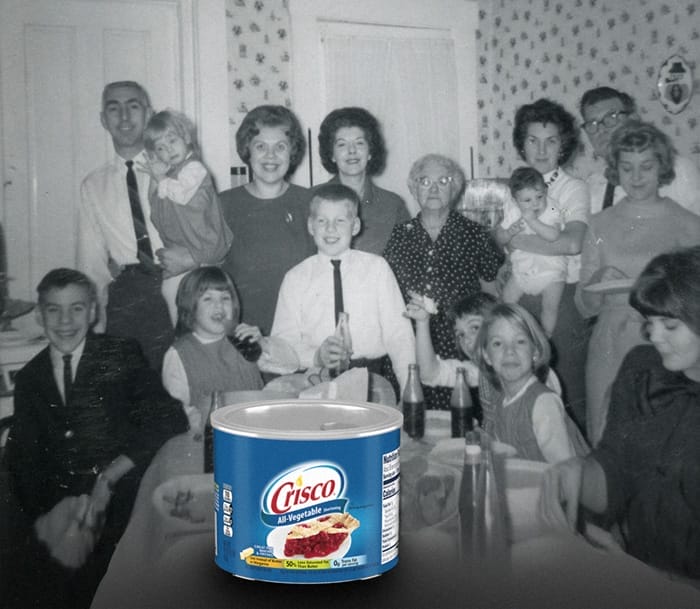For as long as I can remember, there was a can of Crisco shortening in the cupboard at 134 E. Bruce Street. My Mom was not much of a baker, per se. But she found a lot of uses for Crisco when she cooked.
There is a can in our pantry right now. We are not the baking types either. In fact, besides holidays, it just doesn’t happen. But having a can of Crisco is like having the kitchen sink. You need one.
There are lots of alternative uses for Crisco besides cooking. Websites are full of them, ranging from healing dry skin, to lubricating squeaky household items, to removing grime from key locks, or dead bugs from headlights. A little dab’ll do you.
But Crisco hasn’t been with us forever and for always. It came into this world in 1911. That is when Procter & Gamble unveiled its brand new shortening.
Those folks at Proctor and Gamble came up with a brilliant marketing campaign for the original Crisco. They dubbed it as an alternative to lard. They said, loud and proud: “It’s all vegetable! It’s digestible!”
Although, admittedly, Crisco was not a big success to begin with. It was the first solid hydrogenated vegetable shortening. P&G gave the stuff away to start, but women were hesitant to accept 1½-pound cans of Crisco as free samples. But it found success during World War I due to shortages of lard.
The company of Proctor and Gamble was founded nearly 100 years before. In 1837, William Procter, a candlemaker by trade, and his pal, a soapmaker named James Gamble, merged their small Cincinnati businesses. And the P&G company was born.
They must have known what they were doing. By 1859, Procter & Gamble had become one of the largest companies in Cincinnati, with sales of $1 million.
Eventually, though, they rolled out Crisco. Those very first cans came with an eight-page cookbook. It was circular, and they cut it so that it would fit the lid.
They really must have wanted their new product to succeed. In 1913, Procter & Gamble sent six home economists across the country on a promotional tour. They gave week-long demonstrations to show
homemakers how to get the best use of their Crisco. They called it “Cooking School.”
Home economists would
hand out souvenir baskets when the week-long course was complete. They contained all sorts of goodies, like various food samples and, of course, a one-and-a-half pound can of Crisco. They also threw in a brand new Crisco cookbook. Woot.
Since that first Crisco cookbook, P&G has published more than sixty other Crisco cookbooks. I mean, it sounds like Crisco could be in anything.
And. Just when you thought you knew all there was to know about Crisco? Even though it appears to be solid, it actually contains over 80
percent liquid oil. Weirdly, I think, the oil is suspended in the mesh of fat solids. They say it is the same principle as how honey is held in a honeycomb.
If you don’t like to cook with Crisco, just wait for Winter. You can coat your snow shovel with a thick layer of hydrogenated oil. The coating will help prevent the buildup of snow on your shovel.
You heard it here first.
=========
“The only real stumbling block is fear of failure. In cooking, you’ve got to have a what-the-hell attitude.”
― Julia Child
=========
“Always start out with a larger pot than what you think you need.”
― Julia Child
=========
“I think every woman should have a blowtorch.”
― Julia Child
==========
Oooooh. It can only be Crisco!
